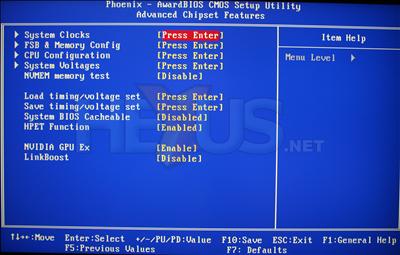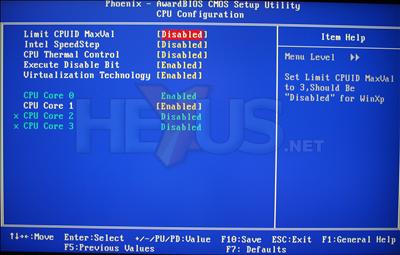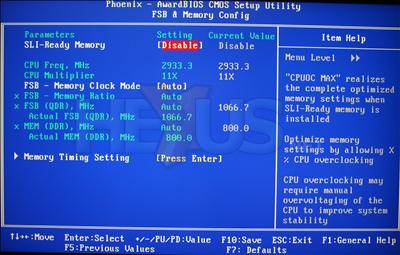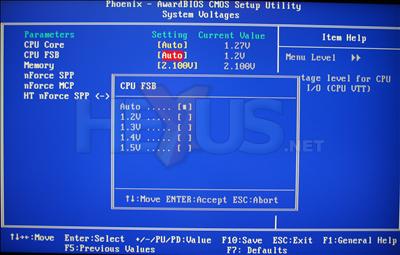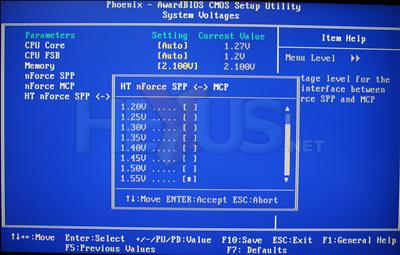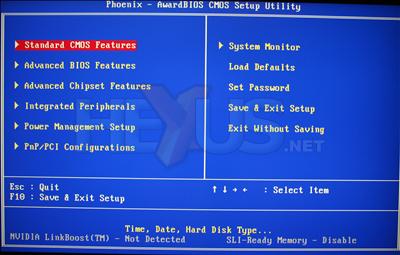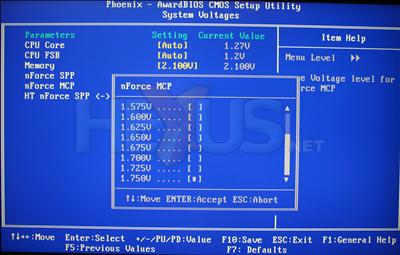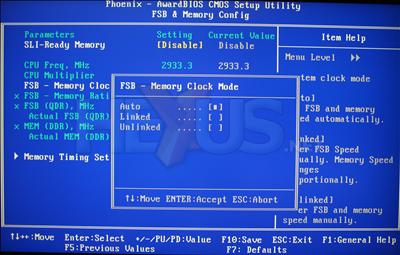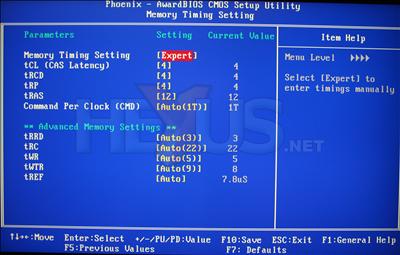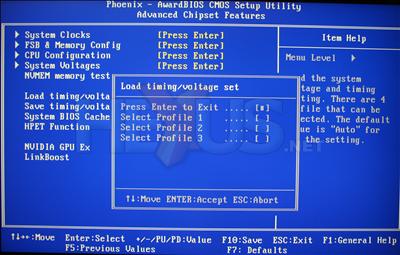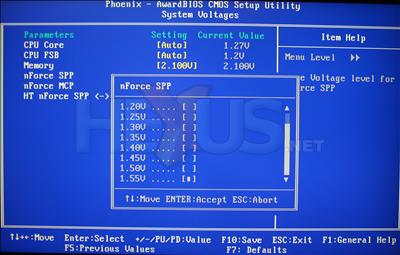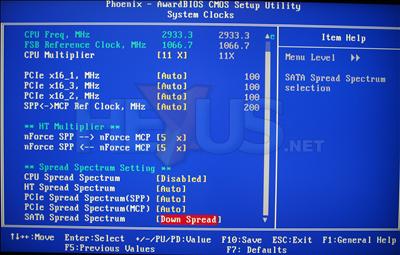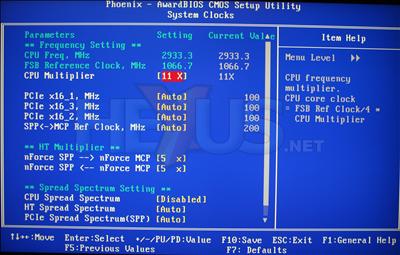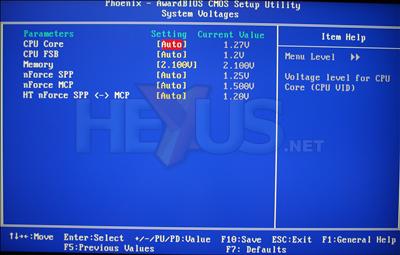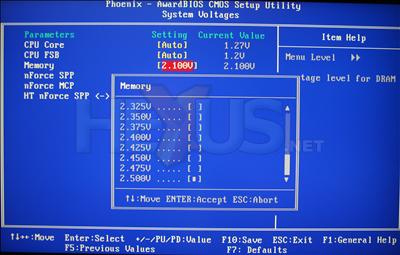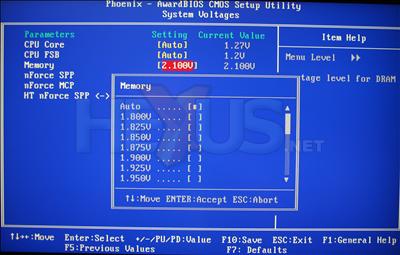BIOS
The PN2+ SLI2+'s BIOS is, for all intents and purposes, the same as the eVGA's we reviewed six weeks' ago, so what applies for it also applies here.| Item | Adjustment |
|---|---|
| CPU bus frequency | 100 to 625MHz in 0.25MHz steps |
| DRAM frequency/multis | DDR2 400 to 1400MHz in 1MHz steps, unlinked, EPP |
| CPU voltage | Up to 1.80000V in 0.0125V steps |
| DRAM voltage | 1.800V to 2.500V in 0.025V steps |
| PCI Express frequency | 100 to 200MHz in 1MHz steps, individual control over each x16 slot |
| 680i SPP voltage | 1.20V to 1.55V in 0.05V steps |
| FSB voltage | 1.2V to 1.5V in 0.1V steps |
| 680i MCP voltage | 1.50V to 1.75V in 0.05V steps |
| CPU boot FID adjust | Yes; depends on CPU |
| CPU boot VID adjust | Yes; depends on CPU |
| Intel Speedstep Control/EIST | Yes |
Discussion
The adjustment ranges are mighty, but it's how they're presented and are able to be adjusted that's the big winner for these boards. The new 680i SPP is able to unlink CPU bus and memory bus and run each asynchronously, letting you set just what you want in terms of each clock. There's little worrying about dividers to be done and the BIOS shows you old and new clocks as you change settings just so you're clear on the consequence of making an adjustment. Heavy-duty overclocking made quite easy, we reckon, and a real selling point of the board.The hardware monitoring section updates close to real-time and seems accurate, and the fan control section give you decent control over the majority of the fan headers from CPU to AUX and Vreg in between. Some of the fan controls are binary, but the majority have granular control to let you control the thermal and noise profile of a PC built around the board, if the board is allowed to control the fans connected. Finally before we let you see the BIOS in pictures (the best way to judge it we reckon), there's profile support for storing three preferential sets of settings, and a recovery system that'll automatically kick the board back to life with last known good settings, should something you poke cause it to stop working.
It all adds up to making tweaking your system a piece of proverbial cake. The best mainboard BIOS ever? abit might have some words to say about that, but it's certainly very close in your reviewer's opinion, if not the best and most usable.
nForce 680i SLI also supports EPP memory for automated overclocking, too.
Image Gallery
Comprehensive! Another benefit of using the reference motherboard.






